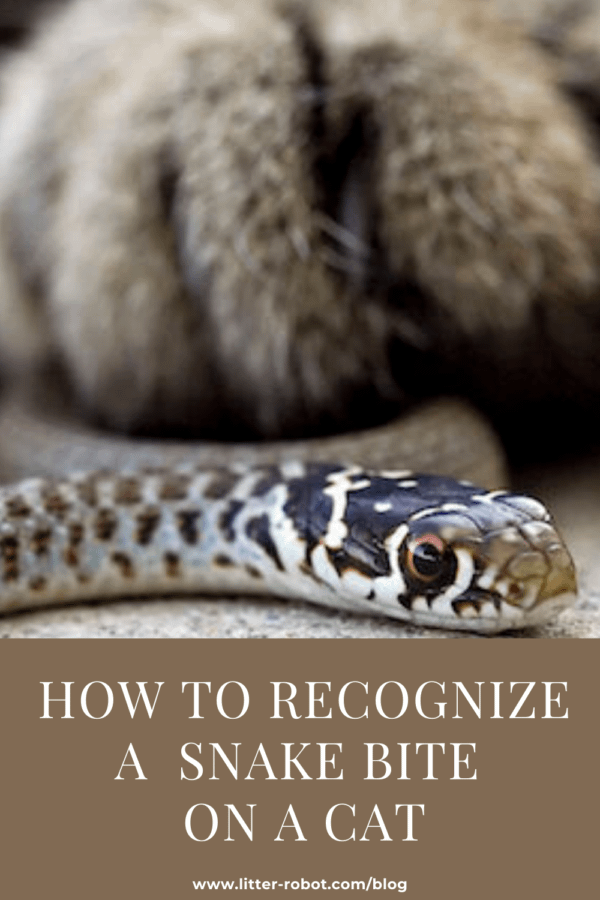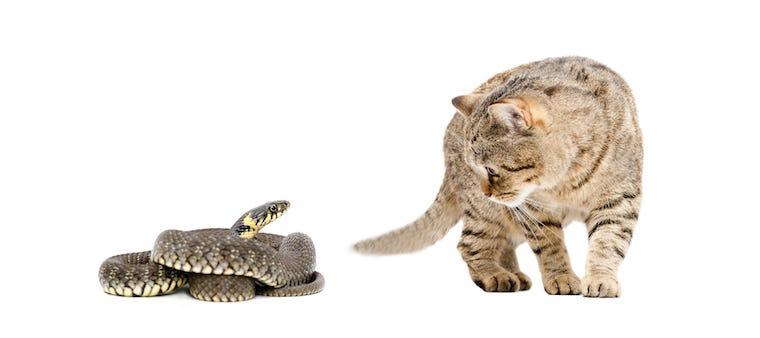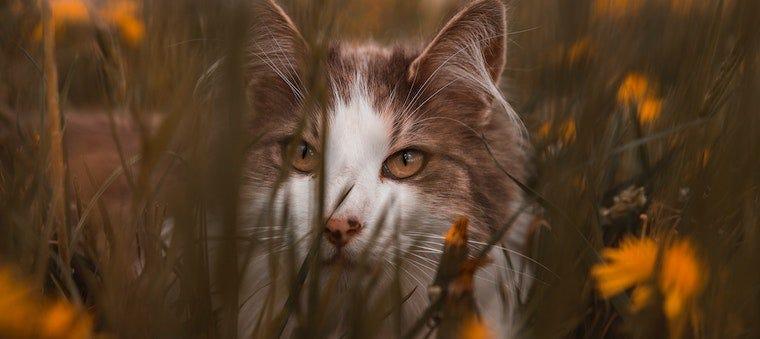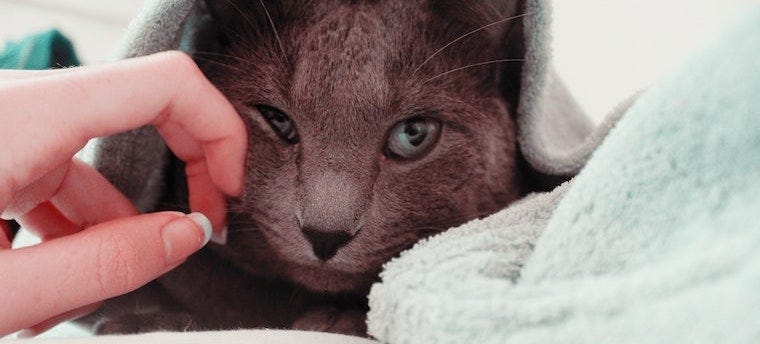Updated April 2nd, 2024
Snakes get a bad rap: They’re typically unlikely to bite unless surprised or on the defensive. Nevertheless, this slithery species is seen as one of the most fearsome in the animal kingdom—even felines agree, which is why cats hiss to imitate snakes! But what if you come across a snake bite on a cat? Learn what to look for and how to treat your pet in the unlikely event that this happens.
What does a snake bite look like on a cat?
A snake bite on a cat can vary in appearance depending on factors such as the type of snake, the location of the bite, and the cat's reaction to the venom. Snake bites often leave behind puncture wounds on the skin which may show signs of swelling, redness, or bruising.
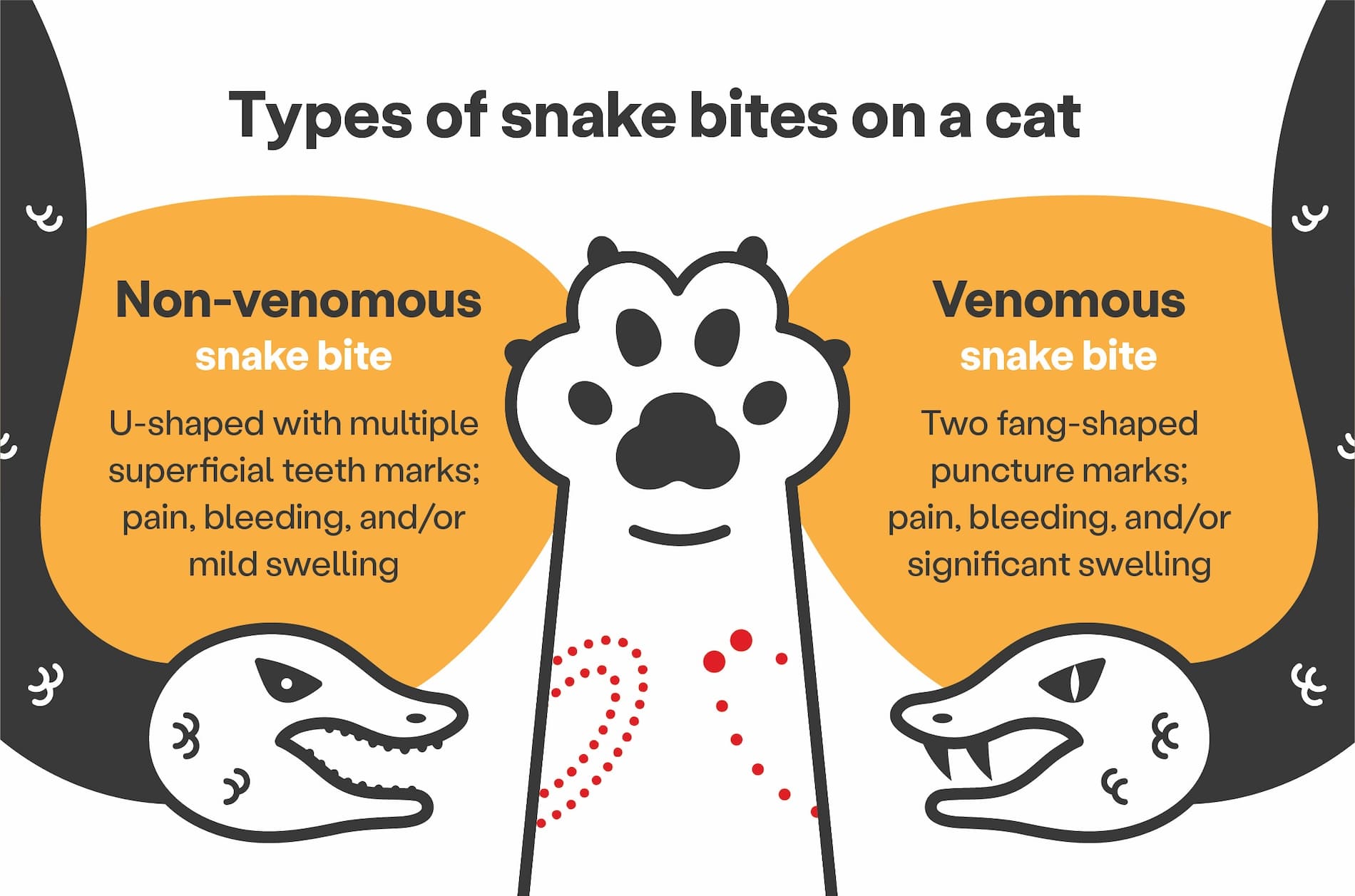
Cat snake bite symptoms
Non-venomous snake bite
While generally less severe than bites from venomous snakes, non-venomous snake bites can still be dangerous. Non-venomous snake bites on cats are much more common than venomous, and cats are most likely to be bitten by a snake on their legs. Typically (because there are always exceptions), non-venomous snake bites are horseshoe- or U-shaped with multiple superficial teeth marks and may be accompanied by pain and/or bleeding—but not always swelling. Because it is still an injury, it is not uncommon to have some mild localized swelling; these bites tend to present like puncture wounds.
If not properly cleaned and treated, the wound may also get infected by bacteria from the snake's mouth or the cat's skin.
Venomous snake bite
On the other hand, venomous snake bites typically appear as two fang-shaped puncture marks. This type of bite will likely be accompanied by pain, bleeding, and/or significant swelling. Other symptoms or behaviors to watch for in your pet include:
- Bruising
- Marked discoloration of surrounding skin
- Drooling
- Pale or white gums
- Rapid heartbeat
- Rapid breathing or difficulty breathing
- Vomiting and/or diarrhea
- Weakness
- Drooping eyelids
- Dilated pupils
- Incoordination
- Paralysis
- Convulsions
How to treat a snake bite on a cat
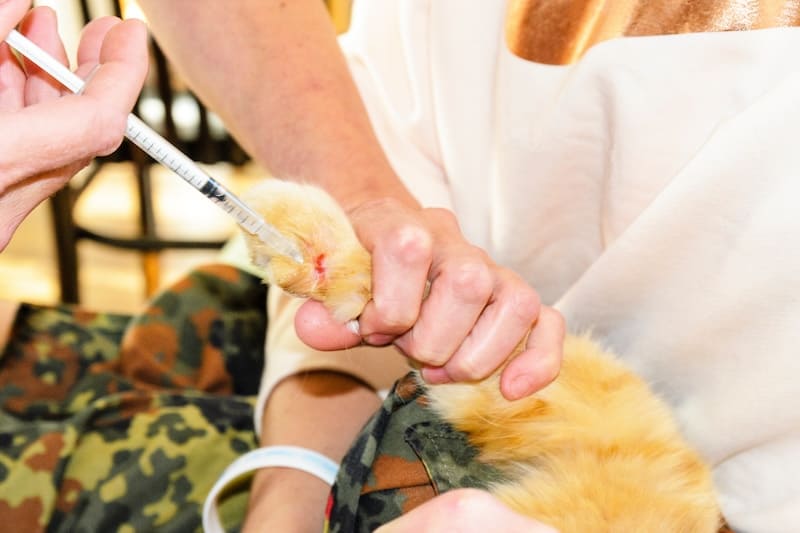
If you notice a bite mark or any of the above symptoms on your cat, we recommend taking your cat to an animal hospital right away. Treatment should begin as soon as possible after the bite. Depending on the snake involved, this could very quickly be a life-or-death situation.
While it may feel beneficial to try to administer first aid of any sort at home or monitor for the development of symptoms, this is not a situation where that is appropriate or recommended. In fact, the use of ice, cold packs, hot packs, sprays, tourniquets, suction, or shock are not only ineffective, they can be potentially harmful.
The best thing to do is to keep your cat calm and quiet by limiting their activity and getting them to an emergency veterinary clinic as soon as possible.
If you saw your cat being bitten by a snake, try to note what kind of snake it was (for instance, rattlesnake) or any of its identifying marks. If possible, snap a photo of the snake. Do NOT approach the snake even if you are certain it is deceased. NEVER handle a venomous snake, not even a dead one or its decapitated head.
The veterinarian will want to know any information you have about the snake, where the attack took place, and where and how long since your cat was bitten. A venom test kit, blood work, and cultures may be performed to identify the snake and determine treatment. The vet may need to administer antivenom, IV fluids, feeding tubes, and oxygen, depending on the severity of the situation. Unfortunately, if treatment for a venomous snake bite on a cat isn’t immediate, the bite is often fatal. Additionally, snake antivenom is generally in short supply—regular veterinary clinics will not have it in stock, and even emergency hospitals may be limited in what they have.
If your cat was bitten by a non-venomous snake, it’s still a good idea to contact your vet for advice, especially if you are unsure.
Venomous snakes in the U.S.
We’ve compiled an incomplete list of common venomous snakes in the U.S. If you’ve seen these snakes in the wild or know that they exist where you live, you can be better prepared for the unlikely event of a cat snake bite.
Eastern Diamondback Rattlesnake
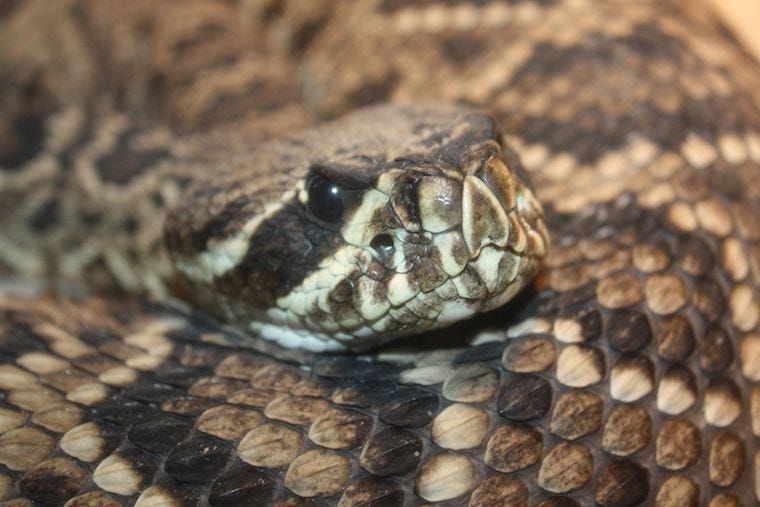
- Identifying characteristics: Largest venomous snake in the Americas (up to 8 feet long and 35 pounds); black diamond patterns offset by yellow borders.
- Prime habitat: Pine forests, mountains, dry marshes, and coastal areas of Florida and the lower southeastern U.S.
Western Diamondback Rattlesnake
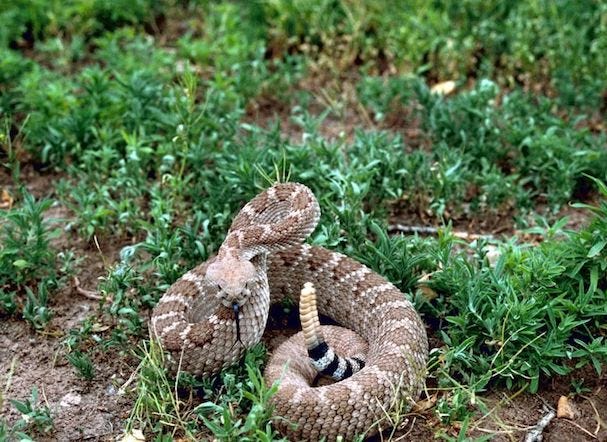
- Identifying characteristics: 4-5 feet long, 10-15 pounds; brownish “base” with cream outlines.
- Prime habitat: Sandy, sun-warmed deserts, salt marshes, and rocky mountain areas; range extends from the Southeast to Mexico, California, and halfway into Canada.
Coral Snake (Eastern and Western)
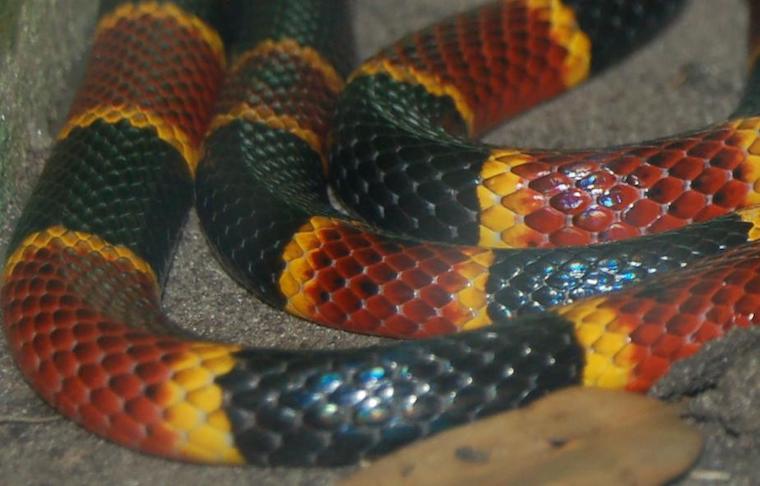
- Identifying characteristics: Brightly colored with primary black and red stripes, and smaller yellow encircling stripes.
- Prime habitat: Southern part of North America.
Copperhead Snake
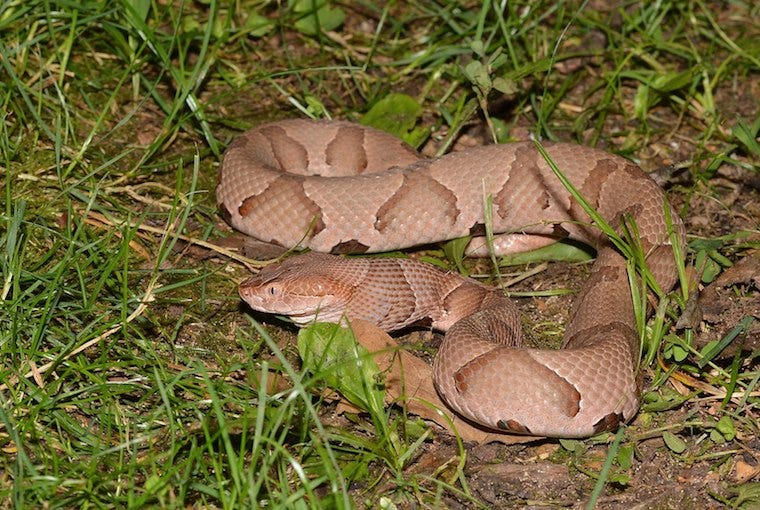
- Identifying characteristics: 2-4 feet; reddish-brown, coppery bodies with chestnut brown crossbands.
- Prime habitat: Along the Eastern Seaboard as far north as New York and inland as far west as Nebraska.
Cottonmouth Snake or Water Moccasin
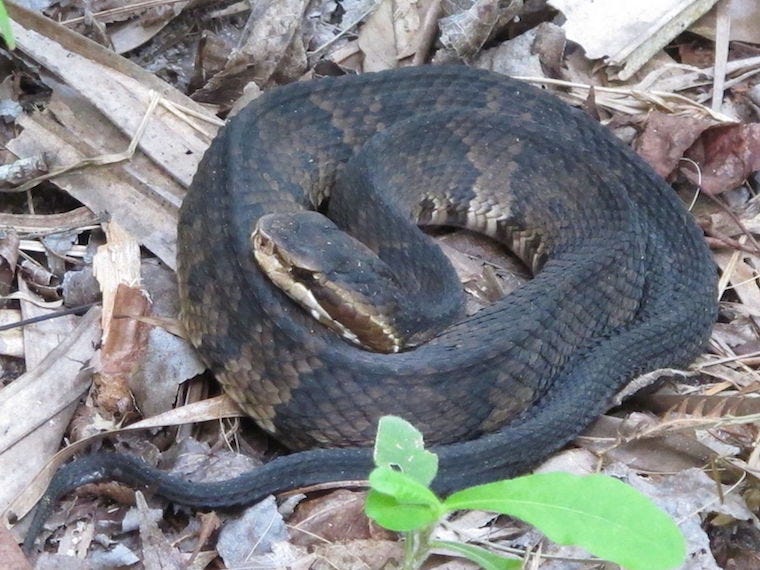
- Identifying characteristics: 2-6 feet; large, triangular heads, dark stripes by each nostril, and pale snouts.
- Prime habitat: Semi-aquatic regions, marshes, swamps, and warmer streams and lakes.
Timber Rattlesnake
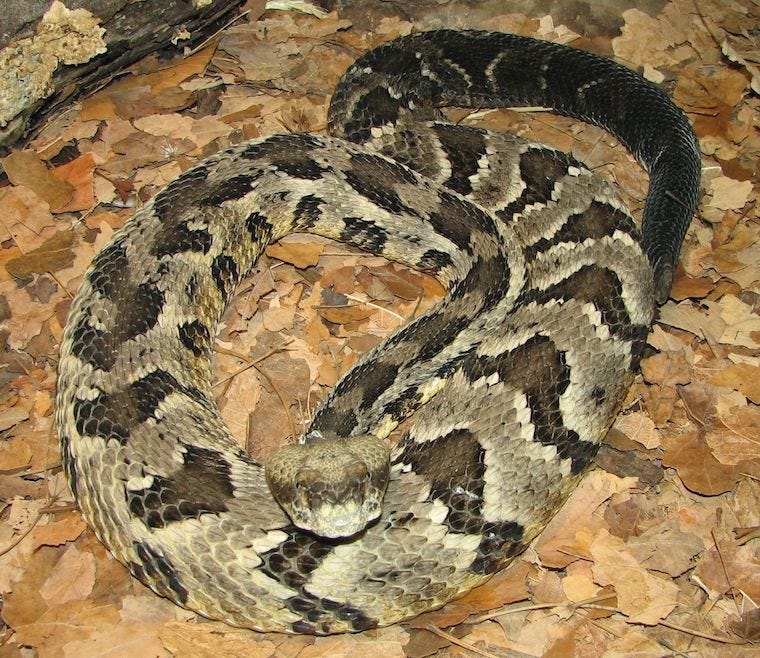
- Identifying characteristics: 3-6 feet, up to 10 pounds; dark brown or black crossbands on a yellowish-brown or greyish background; may have a rust-colored vertebral stripe.
- Prime habitat: Northeastern U.S.
Mojave Rattlesnake
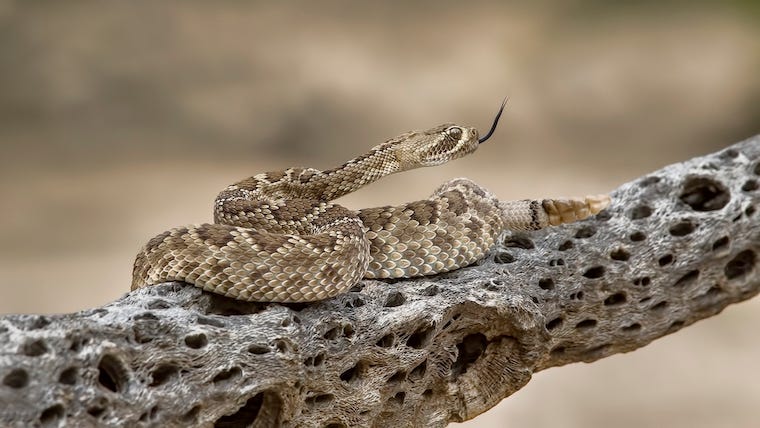
- Identifying characteristics: 2-4 feet; typically grey, tan, brown, olive-green, or light yellow, with a diamond pattern.
- Prime habitat: Southern areas of Arizona, California, Utah, New Mexico, and parts of Texas; prefers open areas of sparse vegetation and sandy, desert conditions.
Massasauga or Black Rattlesnake
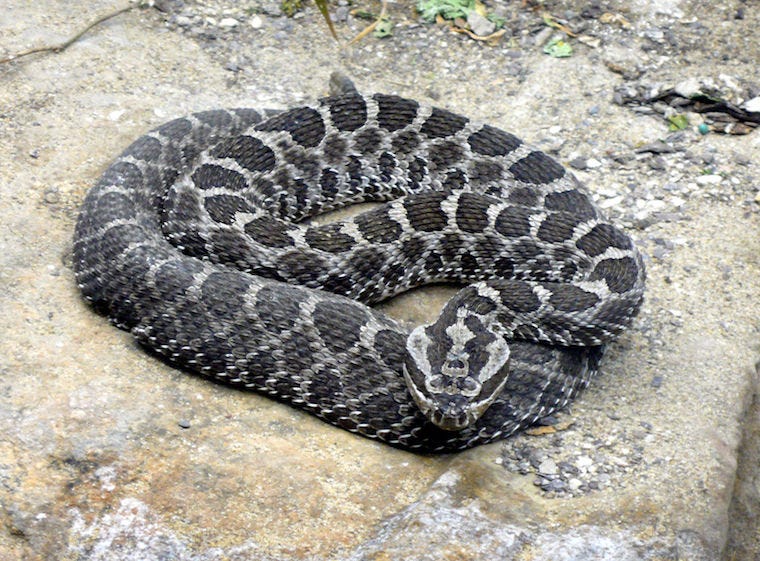
- Identifying characteristics: 1-3 feet; grey, black, or light brown with large, light-edged chocolate-brown blotches on the back and smaller blotches on the sides.
- Prime habitat: Most common in Ontario, Michigan, and through the upper Missouri valley with populations reported in Colorado and ranging down to Mexico; prefers marshes and grasslands.
How to prevent a snake bite on a cat
The best way to prevent a cat snake bite? Keep your cat indoors! Other ways to reduce the risk are to keep your grass mowed and clear your yard of spots where snakes more commonly reside, such as logs or wood piles.
Learning to recognize and react quickly is the best way to prepare for a snake bite on a cat.
Sources:
- Top 10 Venomous Snakes of the United States
- Snakebites in Animals
- Snakebite envenoming
- Snakebite Envenomization
Cover photo © Umberto Salvagnin / CC-BY-SA-2.0
